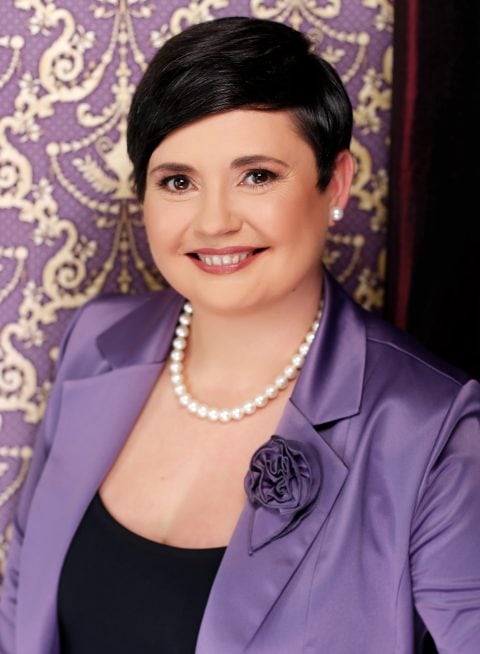Since the beginning of this year I ran numerous conversations with team and organization leaders, either as part of ongoing market research or as part of my group training and 1-1 leadership mentoring dialogue. There seems to be one common thread that connects most of our discussions: managers simply don’t know what to do these days and what things they should focus their attention on first.
This hesitation comes often on a background of employee mental and emotional fatigue that is deepened by the prolonging pandemic with no clear end in sight. Which makes one wonder what was first: the mental and emotional fatigue leading to indecisiveness or the leaders’ indecisiveness leading to more mental and emotional fatigue across the board.
If you recognize yourself in the lines above, here are a few things you could consider to uplift your people’s spirits and to bring them back on track regardless of the outer circumstances.
- Focus on what you can influence. Regardless of their level of leadership, many people still fall into the trap of focusing more on the problem rather than on the outcome and more on the outer impulses rather than on their response. If you feel lost, draw three concentric circles. In the one in the center place the things that you can ABSOLUTELY influence here and now in your team, organization and life. In the second circle place the things you can influence PARTIALLY. And in the last one place the things you cannot influence and you need to ACCEPT and deal with them as they are. For example, while you cannot influence the government’s decision about next anti-pandemic steps, you can definitely influence the object of your focus, the time you get up, the way you dress, the food you eat and the words you tell those around you, including to your team.
- Run a conversation about purpose. We are never talking enough about the WHY of being together, the deep reason powering our work. What is the meaning of our team? What are we trying to achieve together? This is a conversation that you ought to run at least once a year in times of peace – and way more often in times of crisis.
- Run a guided visualization about your common vision. I am fascinated to hear leaders talking about visions in grand words and putting them on paper while seeing very few leaders finding the time to ask people to close their eyes and to envision the future they are striving to co-create together. Vision is a vision because it needs to be envisioned, dreamed, smelled, touched, felt as if it were already here. Only then we can align to the common vision and embody it through individual emotional and somatic anchors connecting us to the collective goal. Imagine for example the flavor of the conversation after taking your people through a guided visualization and collecting their individual inputs on your common vision. Like rivers flowing into the sea, imagine the rich, flavorsome diversity of the possible ways to achieve your vision… Imagine what would be possible then…
- Clarify your goals. It is often said that we are living in a VUCA environment (volatile, uncertain, complex and ambiguous). In my experience, the greatest sources of VUCA in organizations are leaders themselves. Because we never seem to find time to slow down, I see many leaders caught in a swirl of ideas and plans and opportunity mapping while failing to understand that, in times of distress, they are there to become the ultimate creators of the VUCA antidote – stability, certainty, simplicity and clarity. This is why it is essential that you review your short, mid and long term goals as often as possible and that you make sure they are adapted not to your hopes from reality, but to what reality wants from you and your people today.
- Make sure you have your team values in place. I also find it fascinating how easily people start calling random groups of people teams. Groups of people are not teams: they are temporary collections of individuals brought together by a short-term common intention, but it takes way more than that to make a group a team. A team is defined by a common purpose PLUS a set of clear roles for each team member AND a set of clear values that help the team members to understand what desired and undesired behavior is in your team. If you don’t have team values, how can you give feedback and call for corrective behavior without turning the discussion into a personal misunderstanding? So, if you are missing clear team values, this is an area from where you could start right away – it will serve you well way into your future.
- Update your roles. Under the current circumstances it is necessary to review the roles in your team at least quarterly, if not monthly. You need to make sure that work is evenly distributed and that everyone has what they need so they can perform at their best. Map also the role overlaps and establish helpful rules of collaboration aimed at leveraging these overlaps and not allowing them to spill into misunderstandings and conflict.
- Clarify processes and ways of working. In the new hybrid world of work we must have crystal clear work processes in place, written black on white and available to everybody from onboarding to outplacement. The new work agora is a digital, cloud agora and you need to make sure that it exists, it is welcoming and its rule of functioning are available and clear for everybody. We need to understand that, in the new hybrid work normal, the rules of the game have changed. People can continue working from the office – sure, if this makes sense for them. But working from a fixed office should not be an imperative for performance delivery in the new world of work. Teams and organizations with an existing clear and functioning digital agora can perform outstandingly regardless of people’s location – it’s enough to create the conditions for your people to connect to it from anywhere. Thus the physical office space can finally transform from the dreaded open floor full of noise and constant interruptions to a meeting place with a clear purpose: genuine presence, joy and co-creation at work.
- Reduce reactivity – clarify your ways of communicating. The latest madness around Clubhouse makes me think that, after all, we have learnt very little from this pandemic. We are still behaving like children in a candy store, jumping out in a frenzy on the latest shiny piece of glass that someone dangles in front of us. Sure, we need distractions to feel a bit better these days – I can understand that. But what is even more important is whether we finally start to learn to master our communication platforms. This – not personal data protection and management – is the real revolution asking to happen; personal data protection and management is simply the trigger bringing our awareness to the need to master our digital communication channels. As leaders we need to count with the human nature: we are simply reactive emotional beings. More, we are also fighting an uphill battle when trying to master our addiction to digital communication technology that seems to be plugged in the deepest recesses of our unconscious mind. If we want to win and take our focus, productivity and lives back, we need to make sure that we understand what we are dealing with and that we are able to exert self-mastery and self-control to finally put ourselves back in the saddle and tame the beast that it otherwise threating to overwhelm us.
- Cultivate an environment of focus and deep work. This goes hand in hand with the lines above. Even for those people whose work is not analytical deep work is essential. Without critical distance and space to think how can you as a leader recognize the priorities you should focus on and how can you allocate resources properly and successfully to meet your goals? Deep work is essential at every level in the organization and sustained focus is becoming more and more a competitive advantage in the new world of work.
- Last but not least, reskill and upskill – train your people for the roles of tomorrow. Sure, for the moment we might not know how our people will work six months from now. But this shouldn’t prevent you from anticipating the type of skills they might need and take advantage of this global break from business as usual to prepare your workforce for the greatest challenge of our century: reskilling and upskilling people whose jobs are put in danger by accelerated digital transformation. You don’t know what skills to develop? Remember what Jeff Bezos once said: people will be people, so focus on the things that are perennial, not immediate. Emotional intelligence – the capacity to understand and master one’s self, plus the capacity to empathize with others and understand group dynamics – comes to mind as one such skill. Better communication skills come to mind as well. Personal, team and organizational leadership follow. All these wrongly called soft skills – in fact, essential strategic skills for life – are precisely those skills that each of us need to get out of this crisis in good physical and mental health, to recognize the opportunities of the new normal and to act on them with courage so we can thrive in the new normal and reinvent the world of work.



